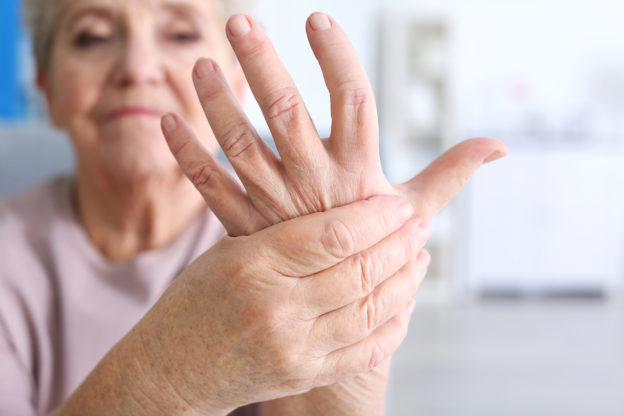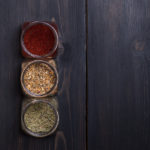By David Blyweiss, M.D., Advanced Natural Wellness
October 16, 2017
- Are salty foods giving you diabetes?
- Here’s how easy it is to blow your daily sodium intake
- It’s time to change your salty ways
One thing food makers are notorious for is adding copious amounts of salt to their products. In fact, the majority of salt in your diet – about 77% of it – doesn’t come from your salt shaker. It comes from processed, packaged and restaurant foods.
All of this hidden salt makes it very easy to greatly surpass the recommended 2,300 mg of daily sodium. And that amount is recommended only for the healthiest of people.
If you’re over 50, diabetic or have high blood pressure, current guidelines suggest sticking below 1,500 mg of sodium daily. This is the same amount I recommend for all of my patients, healthy or not.
In the meantime, all of that added salt fans the flames of inflammation. It shoots your blood pressure up and increases your chances of a heart attack or stroke. It also makes you age more quickly by shortening your telomeres.
In recent years, we’re even finding that sodium contributes to the development of type 2 diabetes.
Open your arteries, improve blood flow for a new health miracle...
Did you know your circulatory system has over 60,000 miles of arteries, veins and other blood vessels, if stretched end to end?
But as you age, your blood vessels undergo changes, which may cause them to stiffen, thicken and get clogged.
GOOD NEWS! Doctors have now identified a “Miracle Molecule” inside your arteries that helps OPEN your arteries and IMPROVE blood flow.
It’s what Dr. Valentin Fuster calls it, "One of the most important discoveries in the history of cardiovascular medicine."To you, that means...
- Healthy blood pressure
- Sharper mind and memory
- Skyrocketing energy and muscular strength
- Increased pleasure and passion in the bedroom
- Improved circulation to every cell and organ in your body
Go here to discover a new natural way to significantly boost the levels of this miracle molecule in YOUR body NOW!
You may think diabetes is “just a sugar disease”. So you’ll be surprised to learn that each extra 1,000 mg of sodium you eat every day increases your chances of developing this metabolic disorder by about 43%. And people with intakes above 3,150 mg have a 58% higher risk.
Since the average American eats over 3,400 mg of sodium daily, it’s no wonder heart disease and diabetes plague our nation.
Here’s how Easy it is to Blow Your Daily Salt Intake
Now, it’s not hard reach 3,000 or 4,000 mg of sodium in a single day. And it’s real easy to blow your salt intake before the day is even half over.
Let’s say you eat a wholesome, low-sodium breakfast. Then you meet up with a friend for lunch at Olive Garden. The endless soup and salad sounds like a pretty healthy choice.
Well, just a single bowl of their minestrone soup contains 810 mg of sodium. A serving of salad comes in at 770 mg. So you’re already over my recommended 1,500 mg of sodium for the day. And it you eat two servings of each, you’re almost at the 2,300 mg recommended by the U.S. dietary guidelines. Eat one more serving of either, and you’ve blown it altogether.
The World's Quickest Solution for Ending Prostate and Urinary Misery
This has recently been revealed to be one of the only real breakthroughs in prostate health.
The seeds of a strange fruit (sometimes called "Chinese Apples") hold powerful phytonutrients that are a revolution in prostate health.
In fact, UCLA and Veterans Administration research have now proved this to be true.
Not only that, but it may be the worlds quickest solution for ending prostate misery.
Simply stated, these phytonutrients represent a huge step beyond beta sitosterol, saw palmetto, and other phytosterols alone.
Simply click HERE if you want to have fast prostate relief...restful, uninterrupted sleep...no more constant "urges to go"...enhanced virility...and optimal prostate support for life.
You’re just as susceptible to overeating sodium at home, even if you’re trying to eat healthy. Commercial salad dressings – even ones that sound healthy, like Extra Virgin Olive Oil Vinaigrette – are deceptively high in sodium. (Other condiments tend to be unexpectedly high in sodium, too.)
Healthy sounding whole grain breads… seasoned frozen veggies… cottage cheese… veggie burgers… sports drinks… vegetable juices. All of them are loaded with the stuff. Even chicken breast from the meat counter is often pumped with a saltwater solution to make it juicier.
So let’s take a look at what you can do to cut your salt intake.
It’s Time to Change Your Salty Ways
One of the first things I recommend when eating out is to check the restaurant menu online before leaving the house. Most of them now include nutrition info, so you can plan your low-sodium meal in advance.
At home, it takes some detective work and planning.
Always check your nutrition panels before purchasing a product. It doesn’t matter if it’s soup, bread, cottage cheese, salad dressing or any other food that sounds harmless. Many foods that don’t taste the least bit salty can have a pretty hefty sodium content.
And don’t forget to check the serving size against the amount of sodium per serving. Often times something that looks like a single serving could contain three or four servings. So you have to multiply sodium content by that amount if you plan to eat it all.
When it comes to veggies, opting for fresh organic is always best. But if you have spoilage concerns, your next best choice is to choose frozen vegetables without any added seasonings or sauces.
That being said, it’s always a good idea to avoid buying vegetables – or any other food – that comes in a can. These are some of the worst offenders when it comes to added salt.
However, if canned foods are your only option, look for ones that are “salt/sodium free” (meaning it contains less than 5 mg of sodium per serving) or “very low sodium” (which must have less than 35 mg of sodium in a serving).
Avoid low sodium, reduced sodium and lightly salted foods, as these are all misleading claims and can contain much more salt than you would imagine.
Just as importantly, take the salt shaker off the table. Don’t salt your food until after you taste it. I tend to season my foods liberally with extra virgin olive oil mixed with garlic, herbs and a little lemon juice. I urge you to give it a try. You’ll be surprisingly pleased with this explosion of flavors.
But if you find you still can’t resist the salt, the best thing you can do is use sea salt over regular table salt. Unlike iodized salt, it retains trace minerals like magnesium, potassium and calcium that help offset the negative health effects of too much sodium.
SOURCES:
Sodium (salt) intake is associated with a risk of developing type 2 diabetes. Press Release. Diabetologia via EurekAlert. Sept 2017.
Haidong Zhu, et al. “Abstract MP64: High Sodium Intake is Associated with Short Leukocyte Telomere Length in Overweight and Obese Adolescents.” Circulation. 2014; 129: AMP64.
Olive Garden Nutritional Guide. U.S. Restaurants Printed information valid July 31, 2017 – September 24, 2017.








THANKS SO MUCH FOR YOUR INFORMATION.
LATELY,WE HAVE CHANGED TO HIMALAYAN PINK SALT AFTER A TRIP TO TIBET.
WHAT CAN YOU TELL ME ABOUT THAT KIND OF SODIUM ?
APPRECIATE YOUR INPUT.
CHEERS
Dr DAVID SASSOON